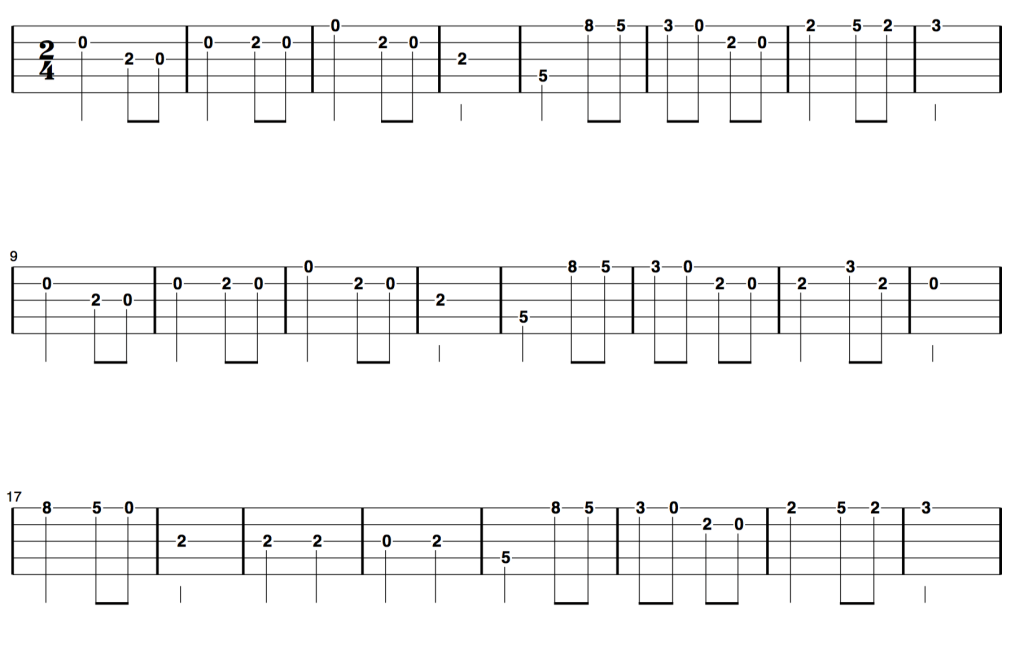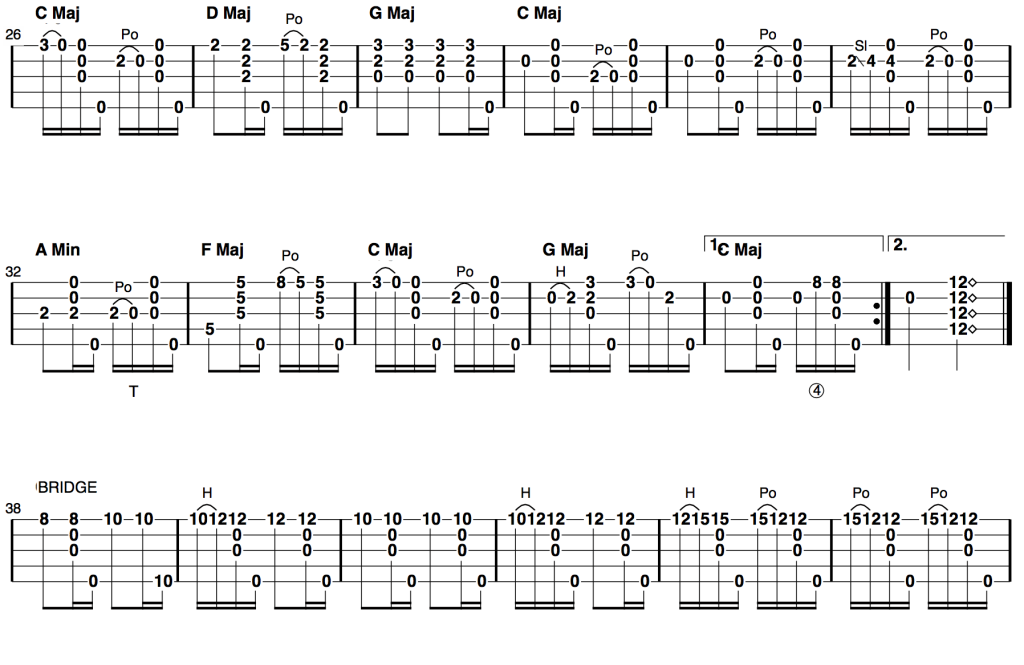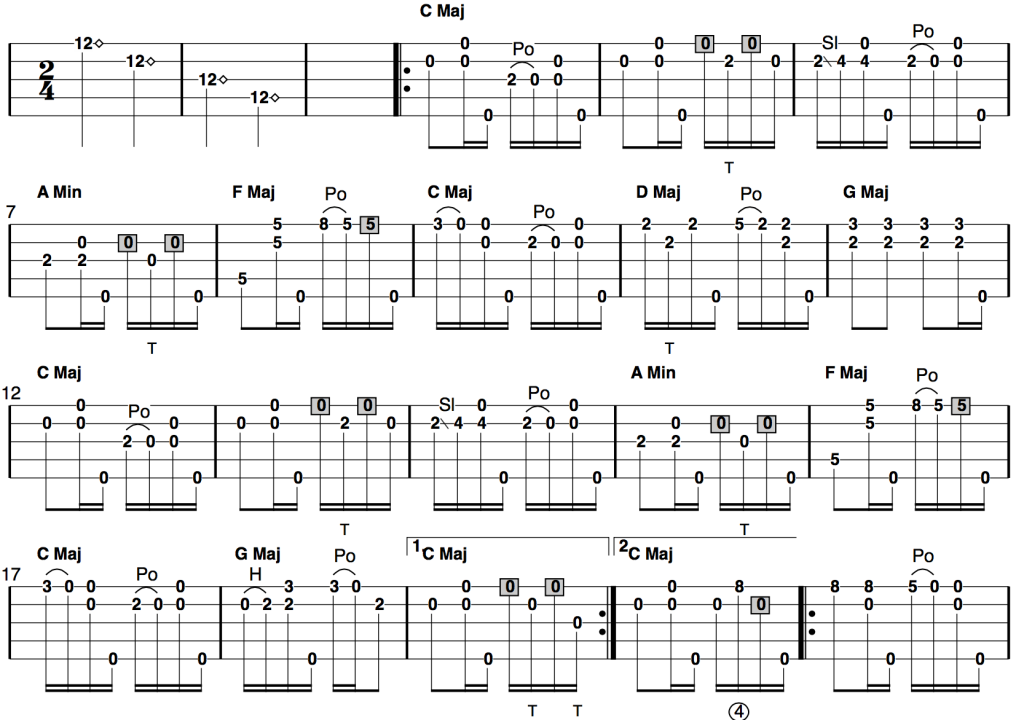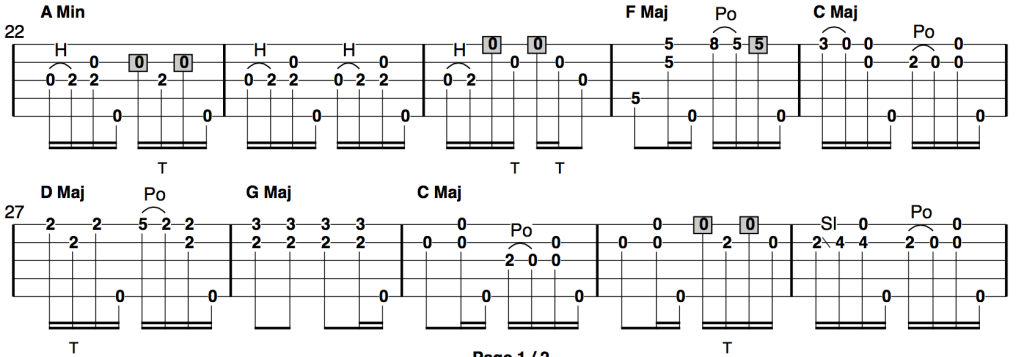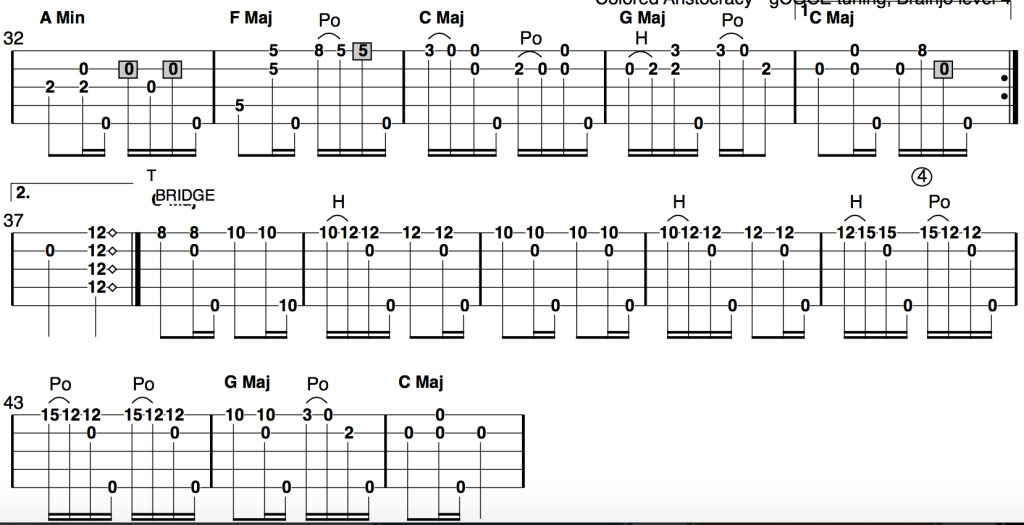Generally speaking, I like to make tunes my own. Meaning that even if I may be playing a tune I didn’t write (which is the case when one is pulling from a traditional repertoire), I still like to interpret the tune in my own way. When setting about to learn a new tune, I may listen to multiple versions, and then start the work of creating my own arrangement once I have an idea in my mind of what it should sound like.
Every now and again, however, I’m so taken with a particular rendition of a tune that I want to learn that particular version, and will tend to stick to it going forward (this sort of thing is of course commonplace in the bluegrass cult of Scruggs, but not nearly so much in the broader world of banjo).
One example: “Colored Aristocracy”, as played by the great Taj Mahal on his album “De Old Folks At Home”. Take a listen.
First time I heard it, I knew I wanted to not just learn the tune, but to try to get as close to Taj’s version as I could. And since posting the tune and tab for the clawhammer tune of the week a few months ago, many others chimed in that they had a similar reaction to mine.
Colored Aristocracy is typically considered a G tune. That’s where the fiddlers tend to play it, so that’s where it shows up in jams.
But, since we’re all about SOLO clawhammer classics here, we needn’t concern ourselves with how them pesky sawstrokers like to do things.
Taj certainly didn’t care. Not only did he change it to the key of C, but he plays it out of the less traditional open C tuning (which we used a few tunes ago with Snowdrop). He adds lots of syncopated goodness and heavy, foot driving backbeat (here’s a typical “G” version on the fiddle for comparison)
Step 1: Know Thy Melody
No note hunting shall commence until thy melody can be hummed, whistled, or otherwise brought forth from thine own memory. So listen to the version above (and Taj’s) till you can meet the requisite note hunting conditions.
Step 2: Find the Melody Notes
Before we take out our fretboards and go note hunting, let’s make sure we’re all on the same page about the basic melody of this tune. Remember, here, we want to distill this melody down to its essence, minus all the clawhammery bits.
Here’s what I hear as the basic melody (including the “bridge” part):
Notice the difference between this version and the final one in the video – there’s a sizable dose of syncopation in the final arrangement, meaning some of the notes that are played on the beat in this essential melody are shifted to the offbeat in the final version.
Now let’s locate them notes. Make sure you’re in gCGCE tuning, aka “open C”. See if you can find the notes, then check your answer below:
Step 3: Add Some Clawhammery Stuff
Now it’s time to add the clawhammery bits! We’ll take that melodic backbone, syncopate a bunch of those melody notes with some well placed hammer ons and pull offs, follow our melody notes with some ditty strums, and….voila, we’ve got a great sounding clawhammer arrangement that’s already pretty close to what Taj plays. Here it is in tab (I’ve also added the opening harmonics on the 12th fret, as Taj does, along with the “bridge” part he plays in the middle of the tune):
And here’s what that sounds like:
Step 4: Embellish To Taste
Now let’s make a few adjustments to our initial arrangement. For me, this is primarily a matter of adding a few more “syncopated skips” (where a melody note is shifted to a drop thumb, and oftentimes surrounded by “skip notes” to help the shifted note stand out more).
Here’s what the new arrangement looks like tab (and can be heard in the video at the top):
